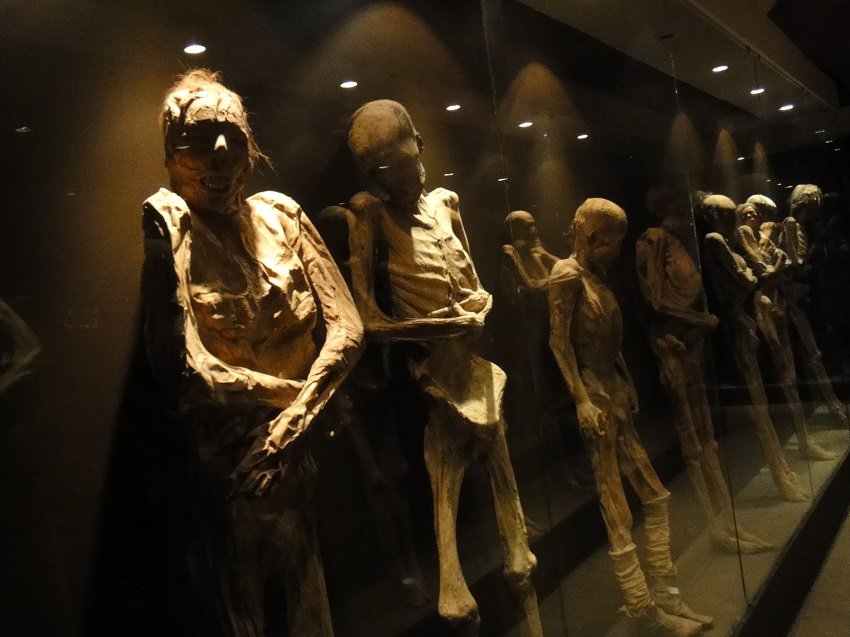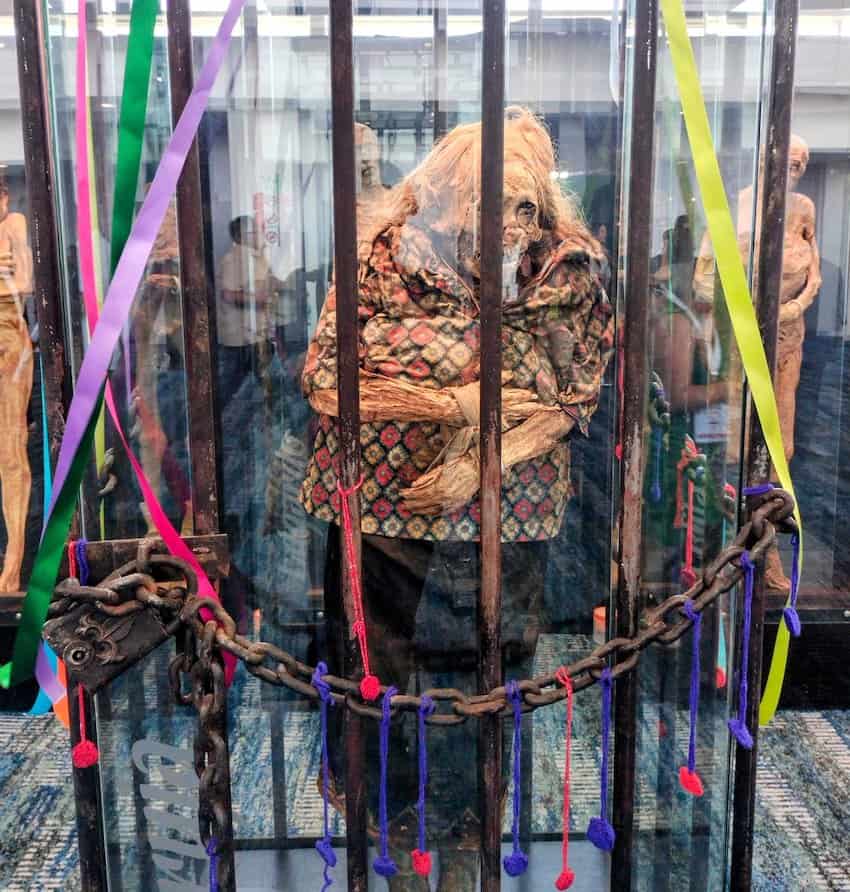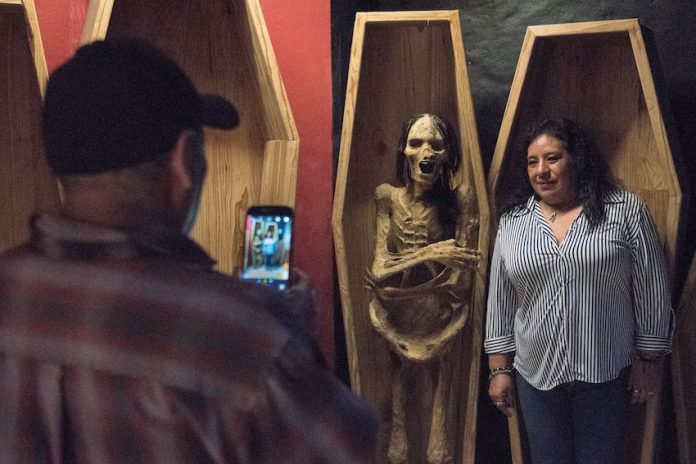“Watch out for those mummies!”
That’s pretty much what experts from Mexico’s National Institute of Anthropology and History (INAH) were screaming last week after a traveling display of six mummies from Guanajuato was presented in Mexico City.

The mummies were displayed inside glass cases at the Tianguis Turístico, a four-day tourism fair, but officials from INAH expressed concerns that the 190-year-old corpses could pose a public health risk, especially since one of them appeared to have fungal growth.
INAH issued a statement on March 31 distancing itself from a decision by the state government of Guanajuato to display the mummies, saying it had not been consulted about the transfer and handling of the bodies and questioning whether the glass cases were airtight.
The mummies were reportedly viewed by more than 15,000 people during the 47th edition of the fair — Mexico’s biggest tourism industry event — held at the Centro Citibanamex convention center from March 26 to 29.
“It is even more worrisome that they are still being exhibited without the biohazard safeguards needed for the public,” the institute wrote, alluding to the dozens of corpses on permanent display at the Mummy Museum in the city of Guanajuato (which is not operated by INAH) — a visit to which is perhaps one of the most macabre experiences in the country.

Upon seeing published photos of the six traveling mummies, INAH stated, officials observed that “at least one of the corpses on display, which was inspected by the institute in November 2021, shows signs of a proliferation of possible fungal colonies.”
In general, added INAH, the Guanajuato mummies should “be carefully studied to see if these represent signs of risk for the cultural patrimony, as well as for those who handle them and come to see them.”
The preserved corpses were unintentionally mummified when they were buried in crypts in Guanajuato’s dry, mineral-rich soil, reportedly in the 1830s. Some still have hair, leathery skin and their original clothing.
They were exhibited at the tourism fair without authorization from INAH, the agency stressed, although Guanajuato mayor Alejandro Navarro said he received thanks for the display from Miguel Torruco, Mexico’s tourism minister.
The mummies began to be dug up and put on display in the 1860s because their families could no longer pay a local “perpetual burial” fee.
They have been displayed in traveling exhibitions in previous years, including “The Accidental Mummies of Guanajuato,” which toured in the United States from late 2009 to early 2012. The Detroit Science Center produced the extensive exhibit of 36 mummies, which it then loaned to institutions in other cities such as Dallas and Greensboro, North Carolina.
“This may be the most important exhibit on Mexican culture in the last 30 years,” Martina Guzman, the exhibition’s content developer, said at the time.
Contrast that with the Popular Mechanics headline that appeared in the wake of the Mexico City display: “Ancient Mummies From Mexico Might Be Infecting Humans.”
Watch out for those mummies, indeed.
With reports from Associated Press, El Financiero and La Silla Rota
